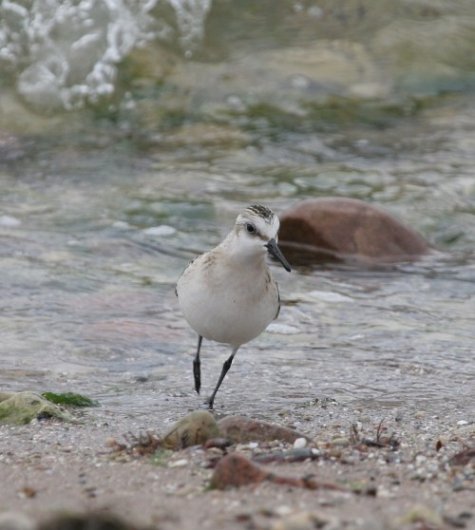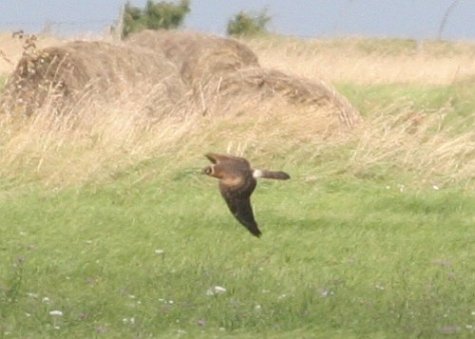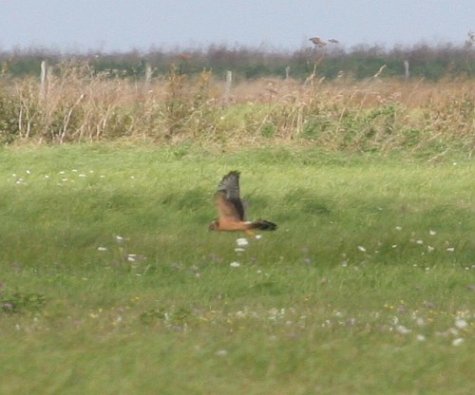Birder’s diary - 3.09
Birder Margus Ots, Linnuvaatleja.ee
Translation: Liis
There are 268 species in my year species list as of today and so the record number until now for one year has been surpassed!
In the morning it was raining quite hard at Sõrve säär and I got out only at about 7:30. Despite the hard wind I struggled down to the shore to search for the birds. To start with I saw almost no one. I was already tramping back from the shore when I discovered a larger group of wagtails and yellow wagtails in shelter behind a pebble bank. I started to scope them one by one and suddenly noticed a somewhat different creature among the others – the tail was very long, the underside and also upper side of the tail were yellow, upper parts greyish. It was clear at once that the bird was a rare nester here and a passing migrant, a grey wagtail (Motacilla cinerea). The flock of wagtails passed by straight under my nose once more and then set off towards Latvia above the windy sea. I went back to the peninsula to check just in case, maybe the birds decided to return after all, but the grey wagtail was nowhere to be seen. I did not get a new year point from the grey wagtail, this species I had registered already at the end of March in Tartu.
Sanderling at Sõrve säär, the hard wind throws it off balance (03.09.2012)
However, at least 25 sanderlings (Calidris alba) were busy at the tip of the peninsula. These juveniles from the far north had evidently not seen a human before and were quite bold, could be observed from only a few meters away.
During the day I visited the best wader spots on the Sõrve peninsula once more. At Kaavi beach a greater flock of sandpipers was grounded yesterday, today the birds were clearly fewer but in one group at least 45 lesser stints (Calidris minuta) were busy at a seaweed bank. I have never seen so many of this species at once.
Young pallid harrier, even in the far-off foggy photo the characteristic collar of the species shows and ...
Rahuste beach meadow got checked again too. I did not see the pectoral sandpiper (Calidris melanotos)that had been observed two days earlier among the waders but I did find a pallid harrier (Circus macrourus) that had been seen during the two previous days. As I noticed the bird in the binoculars, flying far off, it was instantly clear that this must be just this creature and I at once grabbed for my camera. I let off a string of shots until the bird disappeared among the shrubs. Identifying a young pallid harrier is not the easiest thing and since I haven’t had much experience of this species the identification was confirmed from the photos.
... an important characteristic on the lower part of the wings is the ”boomerang” at the base of the primaries (03.09.2012 Rahuste)
Luckily even in the foggy photos from far-off the important characteristics show up nicely: a proper collar, the narrow wing tips, the pale “boomerang” on the wings at the base of the primaries, dark coverts, no broad dark band on the wing trailing edge. If all year points are correctly counted and added this creature should then be the 268th bird species in my 2012 year list. And this means that the currently valid Estonian year record, from 2009, has been surpassed by one species.
(Estonian original 05.09.2012)











